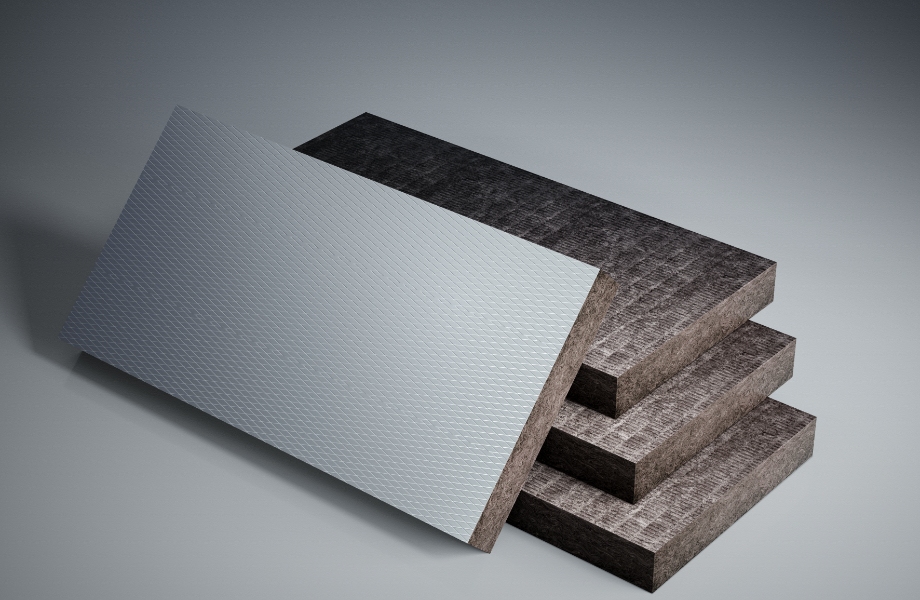E-mail: marketing@hbhuamei.com
High-Strength Roof Insulation Rockwool Board is perfect for thermal and acoustic wall insulation. Initially created to insulate roofs, they are strong mineral wool boards with excellent qualities in fire resistance (Class A rating) and soundproofing when installed on walls.
The compact materials (40 kPa compressive strength) is suitable for exterior and interior walls, in particular commercial buildings and multifamily buildings. It resists dampness and mold and the R-values don’t chnge over time.

Rockwool Board high-strength roof insulation provides top-notch performance when installed on the walls in response to several building requirements.
The dense mineral wool structure offers high thermal resistance (R-value) to help minimize heat loss through the walls. It keeps the inside air temperature steady throughout the year and saves HVAC energy consumption by up to 30% compared to typical insulation.
The boards have a Class A fire rating and will not catch fire at temperatures greater than 1,800°F. The fire code-compliant wall assemblies create essential fire barriers that compartmentalize the building.
The fibrous structure absorbs sound waves while creating a 50% reduction in noise transmission versus typical insulation. This is especially beneficial for multi-family homes, office buildings, and performance venues where sound isolation is essential.
Rockwool does not grow molds unlike other organic materials and still allows vapor diffusion. It does not absorb water owing to its hydrophobic capacities and can be used in bathrooms, cells and exteriors in humid climate.
Rockwool board has benefits beyond basic performance, which improves durability and value of building.
Due to the 40kPa+ high compressive strength, wall system rigidity is enhanced. This benefits
● Exterior Insulation Finishing Systems (EIFS)
● Curtain wall assemblies
● Load-bearing partition walls
● Installation Flexibility
The boards can have neat and precise cuts made around penetrations in framed construction or masonry construction. This flexibility allows application in both new builds and refurb mentions.
Mineral wool’s fiber technology won’t settle or deteriorate, meaning they won’t need to be replaced over the life of the building. This permanent insulation value guarantees energy savings.
Rockwool doesn’t have to be replaced throughout the life of the building. Having a long life cycle reduces construction waste compared to discardable alternatives.
The material simultaneously meets
● Energy code continuous insulation requirements
● Fire safety standards
● Vapor permeability guidelines
● Lifecycle Value
Even if Rockwool costs a premium upfront, its real value is in its durability and performance, which ensure a better return on investment over time by preventing insulation failures and the costly repairs associated with them.
Proper installation is critical to maximize the benefits of High-Strength Roof Insulation Rockwool Board in wall applications. Following best practices ensures the material delivers its full thermal, fireproofing, and structural advantages.
Before installation, the wall surface must be clean, dry, and structurally sound. Remove debris, protruding nails, or uneven surfaces that could create air gaps. For exterior applications, ensure proper drainage and waterproofing measures are in place.
Due to the board’s density (40kPa+ compressive strength), specialized fasteners are required:
● Use corrosion-resistant screws with large washers to distribute pressure
● Space fasteners 12-16 inches apart to prevent sagging
● For vertical installations, add temporary supports during fixing
All board edges and seams must be properly sealed to maintain thermal efficiency:
● Apply manufacturer-approved mastic or butyl tape at all joints
● Stagger vertical seams between board layers
● Ensure continuous coverage with no gaps >1/8 inch
In high-humidity environments or conditioned spaces:
● Install a separate vapor barrier per local building codes
● Seal all penetrations with compatible sealants
● Maintain proper alignment with insulation board seams
After installation:
● Verify all fasteners are flush with the board surface
● Check for compression damage at edges
● Confirm proper sealing of all service penetrations
High-Strength Roof Insulation Rockwool Board delivers unmatched wall insulation solutions for projects requiring these premium performance characteristics.

1. Can roof insulation boards really be used on walls?
Yes, high-strength rockwool boards designed for roofs are equally effective for wall applications. When properly supported, their dense mineral wool composition provides the same thermal, acoustic, and fireproofing benefits in vertical installations.
2. How does the fire resistance compare to regular wall insulation?
These boards exceed standard insulation with a Class A fire rating (highest available), capable of withstanding 1,800°F+ temperatures. They create superior fire barriers that can contain flames for 1-2 hours depending on wall assembly.
3. Will the heavy boards require special wall framing?
While the boards are dense (40kPa+ strength), standard wood/metal stud framing at 16" or 24" centers is typically sufficient. Structural engineers may recommend additional bracing for taller installations or seismic zones.
4. Can I install these boards myself or need a professional?
DIY installation is possible for experienced builders, but professional installation is recommended for:
● Large com
● mercial projects
● Fire-rated wall assemblies
● Exterior insulation systems (EIFS)
● Any application requiring certified performance
5. How does the cost compare to traditional wall insulation?
Expect 20-40% higher material costs than fiberglass batts, but the premium is offset by:
● 2-3x longer lifespan
● Combined thermal/fire/acoustic benefits
● Lower lifetime maintenance costs
● Potential insurance premium reductions
High-Strength Roof Insulation Rockwool Board is the best for walls having superior thermal efficiency, fire resistance and soundproofing. When put in place according to guidelines by the manufacturer, it creates simple wall systems for energy-efficient, durable wall systems for homes and industries. The material's moisture resistance and structural properties make it apt for harsh environments.
For architects and builders seeking reliable insulation solutions, High-Strength Roof Insulation Rockwool Board delivers long-term value through its unmatched performance characteristics and compliance with modern building standards.
Copyright © Huamei Energy-saving Technology Group Co., Ltd. All Rights Reserved | Sitemap | Privacy Policy
Insulation solutions LIST: Insulation solutions LIST